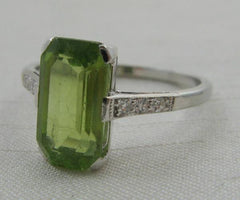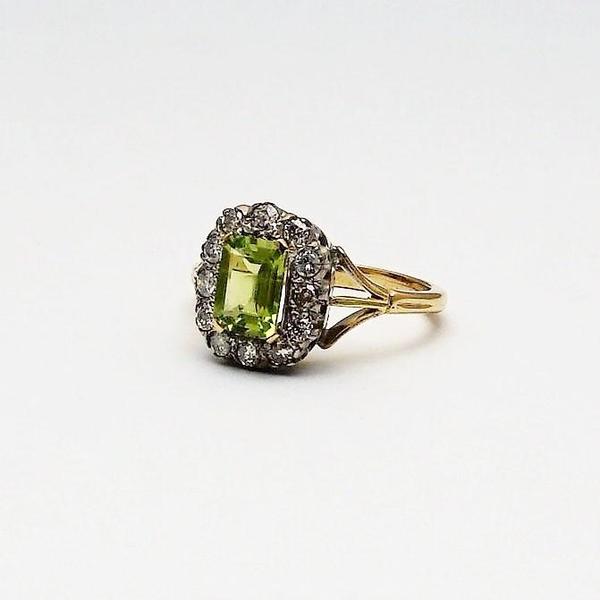
Peridot is one of the few gemstones that occur in only one colour: an olive-green. The percentage of iron that is contained in the crystal structure will determine the intensity and tint of the green. The more vivid and darker olive-green stones tend to be in more demand. Pure green stones are rare as the majority are yellowish green and the lower quality peridot is brownish.
The most sought after darker shade of green colour of peridot tends to come from Pakistan and Burma. They can also be found in the Canary Islands, China, Brazil, Norway, Hawaii, Australia and South Africa. Brazil, as well as Arizona and New Mexico, also provide some fine, though usually small gemstones.
The peridot gemstone dates back to the Pharaohs in Egypt and was mined on the Red Sea Island of Zabargad. They referred to it as the “gem of the sun” and also “evening emeralds” because of the way they caught and reflected lamplight. Some believed that it would protect them from night time terrors especially if it was set in gold.
The word peridot originates from the Arabic word for gem- “faridat”. Most peridot is formed deep inside the earth and comes to the surface by volcanos. They have also come to earth in meteorites but this is extremely rare.
Peridots were regularly confused with emeralds and some historians believe that Cleopatra’s famous emerald collection may actually have been peridots instead. Peridot has also been mistakenly referred to throughout history as topaz.
It is the birthstone for August and is said to bring luck and good sense, as well as stronger friendships when worn. It is an extremely delicate and a rare stone which measures 6 ½ on the MOH’s scale so needs to be treated with great care to preserve it.






